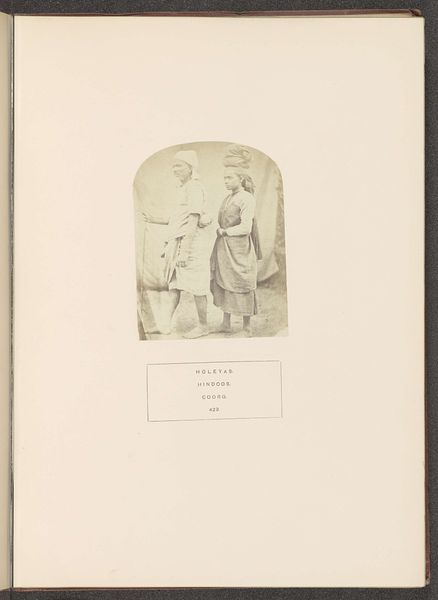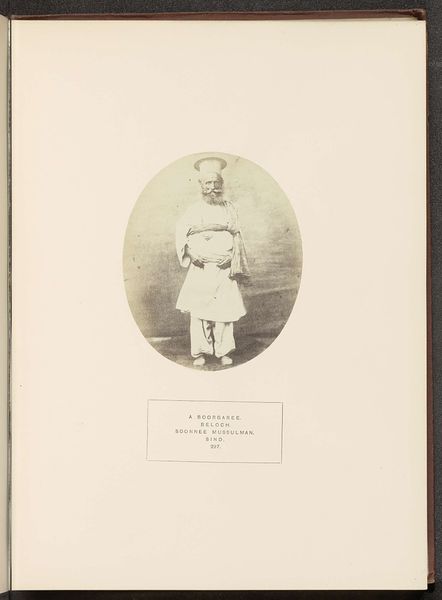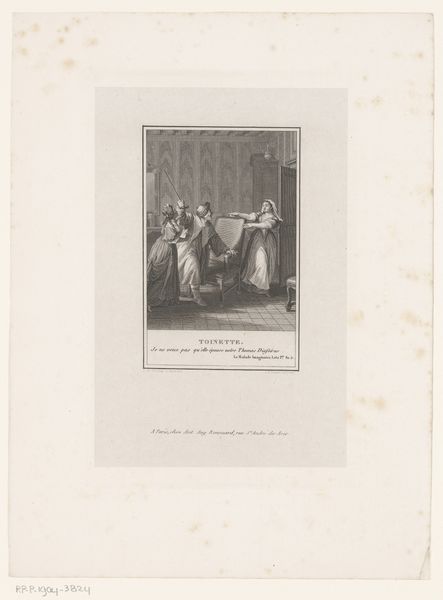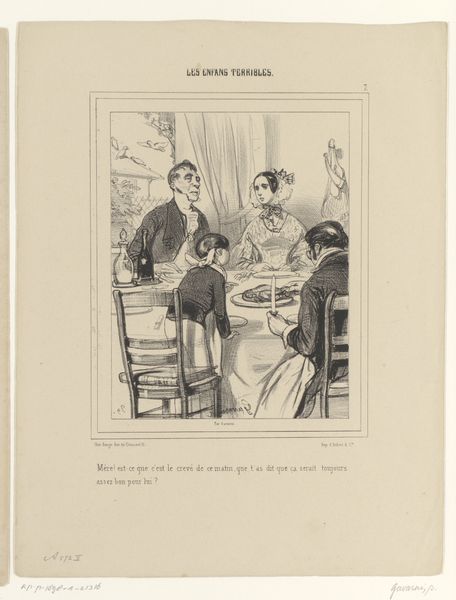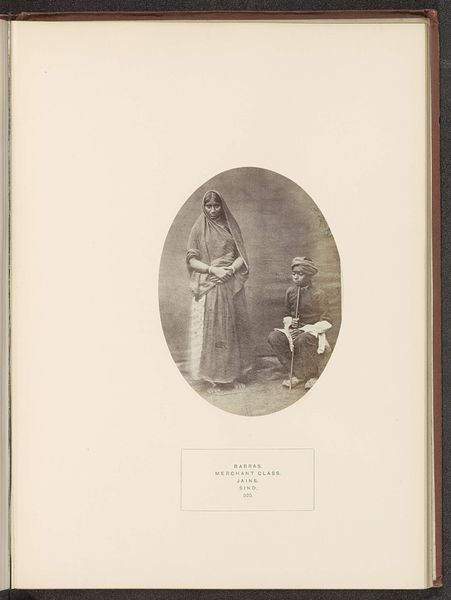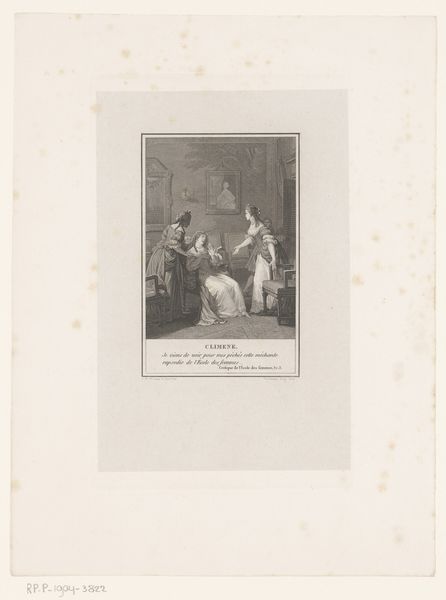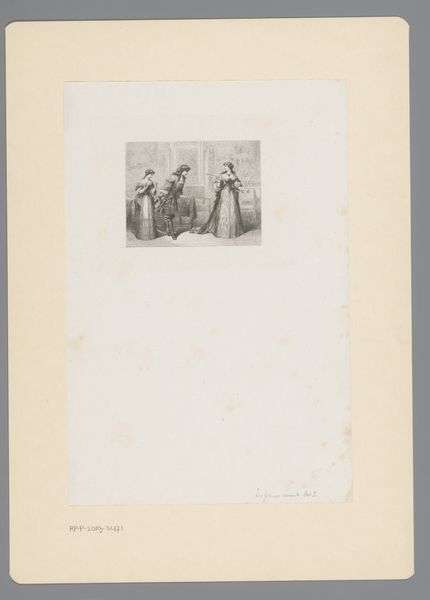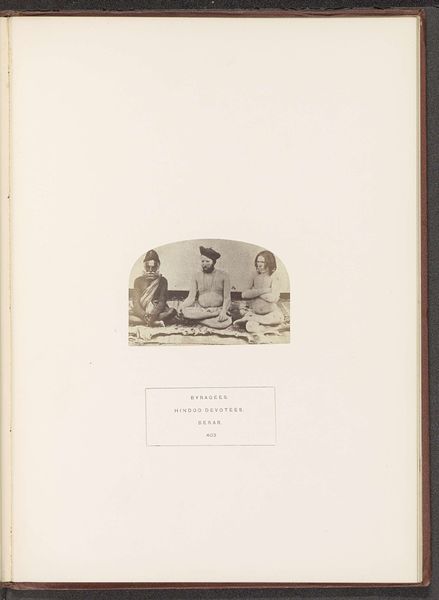
photography
#
portrait
#
photography
Dimensions: height 123 mm, width 96 mm
Copyright: Rijks Museum: Open Domain
Editor: Here we have Henry Charles Baskerville Tanner's photograph, "Portret van twee onbekende Amil mannen uit Sindh," taken before 1872. The Amil men are formally posed; their detailed clothing and solemn expressions caught my attention. What do you see in this piece? Curator: I see a complicated dialogue between representation and power. The "Orientalist" aesthetic flattens the identities of these two men into types for Western consumption, a trend common in photography of the time. How does this image function within a colonial framework? Whose gaze does it serve? Editor: That makes me consider their positioning and clothing even more. How do you think the sitters themselves might have felt about the way they were being portrayed? Curator: That's key! Without knowing their stories, we must acknowledge the inherent imbalance. Were they compensated? Did they have agency in how they were presented? Tanner, as a British photographer, likely controlled the narrative, reinforcing existing power dynamics. Editor: So, understanding the history behind an image like this is vital to discussing the artistic choices. Does knowing that make you view the image differently? Curator: Absolutely. It's about dismantling the romanticized notions of "exoticism." This photo, on the surface seemingly benign, contributes to the broader construction of the "Other" – a crucial concept when decolonizing art history. We have to view these photographs with a critical lens, always asking, "Who benefits from this representation?" and "Whose story is missing?" Editor: I didn't initially think about how much a simple photograph could hold within it, so thank you for sharing that point of view. Curator: Indeed. By acknowledging its historical context, we move toward a more ethical and inclusive understanding of art.
Comments
No comments
Be the first to comment and join the conversation on the ultimate creative platform.
